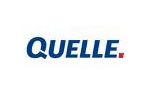Oracle Maestro online help
| Prev | Return to chapter overview | Next |
Database Trigger Editor
Database Trigger Editor can be opened automatically after the trigger is created and is available on editing (see Editing Triggers for details).
The basic principles of Object Editors in Oracle Maestro are considered in the corresponding topic. See below to find the description of editor tabs that are unique to the current object.
Database Trigger Editor provides you with an ability to edit trigger properties. The Properties tab allows you to change the trigger name, the trigger definition, and the trigger events.
The Errors tab displays all the necessary information about object errors. If an error have occurred during the object compilation it appears in the list with some additional properties: Order (one after another), Line and Position (object definition location the error was found out), Error (corresponding PL/SQL exception).
Name
Use the field to rename the database trigger.
 Is enabled
Is enabled
Check the option to enable the trigger.
When fire (Before, After)
Specify Before to cause the database to fire the trigger before executing the triggering event. For row triggers, the trigger is fired before each affected row is changed. Specify After to cause the database to fire the trigger after executing the triggering event. For row triggers, the trigger is fired after each affected row is changed.
When condition
Specify the trigger condition, which is a SQL condition that must be satisfied for the database to fire the trigger.
Server error
Check the box to fire the trigger whenever a server error message is logged.
Logon
Specify the option to fire the trigger whenever a client application logs onto the database.
Logoff
Use the option to fire the trigger whenever a client application logs off the database.
Startup
Specify the clause to fire the trigger whenever the database is opened.
Shutdown
Specify the option to fire the trigger whenever an instance of the database is shut down.
Suspend
Use the clause to fire the trigger whenever a server error causes a transaction to be suspended.
To apply the changes, select the Apply Changes item in the Navigation bar or use Ctrl+F9 or Ctrl+F7 shortcut keys.
It is also possible to modify object properties without opening the object editor: use the Object Properties item of the popup menu of the selected object from the explorer tree.
| Prev | Return to chapter overview | Next |





 Download
Download Buy
Buy
